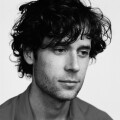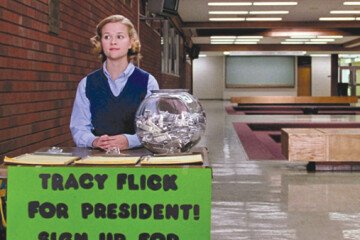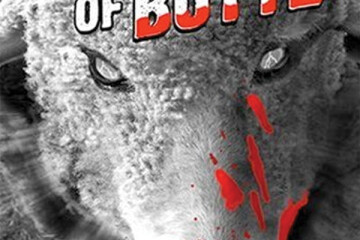Save My Face
On the screen
I’m not ashamed to admit that I often look at myself in the mirror. The near-constant check-ins are met with great comfort and admiration because I am unabashedly vain. So, this November, I am, first and foremost, thankful for my face. Secondly, I am thankful for my vanity because if anyone should love my face it will be me. I appreciate respectful acknowledgment from third parties every now and then. Such as when a fellow partygoer crosses the room to say, ‘You’re the best looking person here.’ Or when stepping into an elevator and hearing the person behind me say, ‘I love your hair’. These are not examples pulled from my own life but simply fantasies that are fitting evidence to my argument. Thirdly, I am thankful for Georges Franju’s 1959 masterpiece, Eyes Without A Face, which tells the story of a young woman who has, as the title would imply, no face. In the film, a brilliant surgeon, Dr. Genessier, tries desperately to perfect the procedure for a face transplant to restore his daughter, Christiane, who was disfigured in an accident. The film is generally regarded a cornerstone of the horror genre, and as you can imagine, there is very little that is scarier to me than not having my face. The carnivalesque tone and striking black and white imagery influenced many of Franju’s contemporaries, as well as future generations of filmmakers (and Billy Idol’s first top-ten hit of the same name). Films are often compared to other films but the first thing I think of when watching Eyes Without A Face are the photographs of Ralph Eugene Meatyard.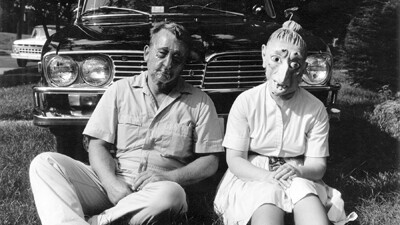
Before I started making films I was a photographer. After college, I got a job with a photographer in New York. He photographed art and while I worked for him I was immersed in the galleries and art scene of Chelsea. Photography is often linked to film as the precursor, that a still image evolved and then came to life via film. In the broad history of art, photography and filmmaking emerged fairly close together though, with the invention of myriad photographic processes between the 1840’s and the turn of the century. So, I prefer to think of them as an estranged pair. They use similar chemical processes to achieve different effect and the art world tries very hard to keep them separate. But I believe the two mediums are in constant conversation with each other and that filmmakers are influencing photographers just as much as the other way around.
Meatyard was an American photographer who worked through the 50’s until his early death in 1972. By trade he was an optician and got into photography as a hobbyist, joining the Lexington Camera Club in 1954. Much of Meatyard’s images are portraits of subjects wearing masks, usually his wife and three kids. His work explores the “masks” of everyday life and the idea that suburban America hides its true identity. His work is well regarded now, in part, because of this timeless idea about identity. Similar to Franju, he was not an overnight sensation and receives more acclaim posthumously. The images are unnerving, they often require a double take before the viewer can really see what they’re looking at. The masks are cheap props, rubber Halloween disguises, which hang draped over the subject. Sometimes the subject looks lifeless, like the mask is actually rotting flesh, but a closer look shows a healthy calf under the hem of a skirt or the sinewy arms of a young man. Photographs are viewed without a time limit. Like a painting, the audience can stare at it for however long they want or need. A photographer will capitalize on this and build a world within the frame for the viewer to explore. The filmmaker, on the other hand, is in complete control of how long the audience views each image.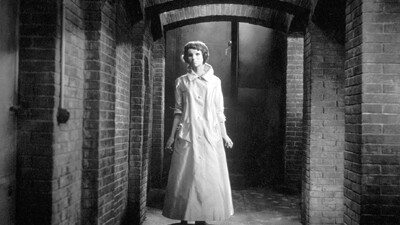
Franju argued that he couldn’t have made Eyes Without A Face in color because color film distracts the audience: they become more focused on the aesthetic of the image and less interested in the story on screen. He wants his audience to see what he is showing them and he wants to affect an emotional response. Franju uses time to build suspense and scare the audience. As the film ends, Christiane, walks away into the woods. The camera is stationary as she disappears out of frame. The audience is not invited to follow her. Unlike Meatyard’s work, Franju’s story is closed. When it ends you are left only with the memory of it.
Fourth and finally, I am thankful for Ralph Eugene Meatyard. He created a body of work that is unique and spellbinding. What good is my face if not to express emotion and share my thoughts and feelings with those around me? I think this is why Meatyard masked his subjects, to point out that all the feelings we are scared to express are not nearly as terrifying as the expressionless face. An idea Franju understood deeply, by creating a film around a character in a white mask, desperate to reconnect with the world beyond her father’s house.
